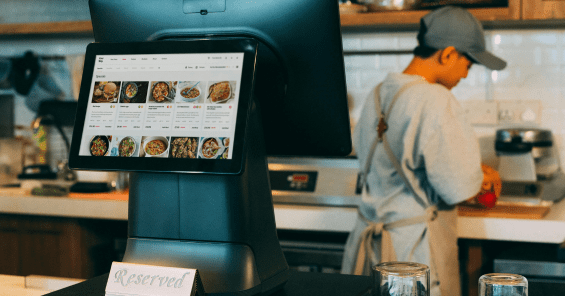

The Ultimate Guide to Restaurant Manager Duties and Responsibilities
Explore the essentials of restaurant management with our guide on the top 10 duties of restaurant managers. Discover how to enhance operations, elevate efficiency, and drive your restaurant's success. Dive in now for key insights!
A team is only as strong as its leader, a truth that’s especially key in the fast-paced restaurant industry. From the host(ess) to the prep cook, everyone plays a pivotal role in the functioning and success of a restaurant’s daily operations and overall bottom line.
However, daily operations don’t come without their fair share of hiccups and team members require a leader to iron out the creases, ensure clear communication, and foster a productive work environment.
That’s where restaurant managers step in.
Restaurant Manager Opening and Closing Checklist
Unlock the full potential of your restaurant's day-to-day operations with our definitive Opening & Closing Checklist Template, designed to streamline your workflow and enhance operational efficiency.

What Does A Restaurant Manager Do?
A strong restaurant manager ensures that all operations run smoothly and guides both front-of-house and back-of-house employees to success.
Although the positions of restaurant manager and general manager may sound similar, their duties and job descriptions vary significantly. General managers oversee broader operational aspects, possibly across multiple locations, and focus on overarching business strategies, whereas restaurant managers are responsible for the day-to-day activities specific to a restaurant.
In larger establishments, restaurant managers may primarily work from an office, whereas in smaller ones they may take on a more hands-on approach collaborating closely with various team members including the restaurant owner, head chefs, and sometimes an assistant restaurant manager. There is no one-size-fits-all approach to a restaurant manager’s role and will depend on the specific needs of your restaurant.
Restaurant Manager Skills and Requirements
So what makes a good restaurant manager? There are both soft and hard skills that successful managers have that set them apart from others.
Many employers prefer managers who have:
- High school diploma
- Bachelor’s degree in business management, hospitality, or related field
- Food Handler Certification Card
- Hands-on experience in various restaurant roles
Managers should also have a set of soft skills to ensure they’re well prepared for whatever may arise, including:
- Leadership skills
- Effective communication
- Problem-solving
- Flexibility
- Time management
10 Restaurant Manager Duties And Responsibilities
1. Leading & Supervising Team
Every role in a restaurant, from seating guests and taking orders to running food and closing shop, is vital for ensuring seamless operations and dining experiences.
Although it's staff members’s responsibility to perform their roles successfully, it’s the manager’s duty to ensure that they do so consistently. Restaurant managers should conduct regular performance reviews with staff members to evaluate their progress, provide constructive feedback, and set goals for improvement.
Whether they’re annual, semi-annual, quarterly, or informal monthly reviews, having a set approach to performance discussions ensures consistent transparency, objective alignment, and a more productive environment.
2. Managing Inventory
For servers, one of the worst things that can occur is being surprised that an item a guest has ordered has been 86’d and relaying the information to the customer. Offering alternatives is an effective way to build rapport with guests, but more often than not, it leads to customer dissatisfaction, strained guest relationships, and server embarrassment.
Effective inventory management ensures a kitchen is fully stocked to meet customer demand. Although kitchen staff take daily inventory counts, check for inventory quality, and properly store ingredients, it’s the manager’s responsibility to oversee these operations.
Managers are typically responsible for placing inventory orders based on kitchen needs, effectively purchasing from multiple vendors, negotiating prices, and managing supplier relationships. They also conduct inventory audits to identify waste and theft and analyze budgets and cost of goods sold (COGS).
Implementing restaurant inventory management software enables managers to run their numbers quickly and accurately, place orders from multiple vendors, identify areas of theft and waste, reduce manual labor, and improve inventory accuracy.

3. Planning Profitable Menus
A carefully stocked inventory lays the foundation for success, but its profitability hinges on its integration into a well-crafted and strategic menu. Whether you’re looking to build a menu from scratch or adjust an existing one, an optimized menu will lead to fewer ingredient orders, improved meal preps, and a healthier bottom line.
Determining restaurant menu prices is an art that requires the skillset of analyzing and understanding food costs, portion control, and market demand. A restaurant manager often collaborates with the chefs to gain insights into seasonal ingredients, preparation efficiency, and kitchen capabilities to create cost-effective menu items that align with customer preferences while ensuring financial success.
To ensure the kitchen operates efficiently and remains profitable, train kitchen staff thoroughly on prep, recipes, and portion control. Implement a digital cookbook accessible to all employees to reference ingredients, portion sizes, and cook times for every recipe at any time, ensuring smooth operations even in your absence.
4. Hiring and Onboarding Employees
Investing time in recruiting and onboarding the right talent pays off, reducing both the costs and disruptions associated with high staff turnover.
It’s part of a restaurant manager’s duties to oversee the entire hiring process from creating job postings and interviewing candidates to choosing new team members and implementing role-specific training.
At the beginning of the training process, managers introduce the employee handbook to convey the restaurant’s mission and values, set expectations, and provide a resource on policies and procedures. Every new hire should also receive comprehensive hands-on training tailored to their specific role, along with thorough instruction in health and safety procedures.
5. Conducting Staff Meetings
Whether in one-on-one huddles or group meetings, restaurant managers should regularly meet with their team to assess needs, frustrations, or roadblocks. Servers, front-of-house staff, and the kitchen are the eyes and ears of your restaurant. Frequent conversations with front-line employees will quickly highlight great ideas and areas of improvement, allowing managers to implement a new initiative or come up with solutions to problems before they snowball.
These open forums of communication also offer the ideal opportunity for a manager to share their expectations and goals for the team.
Great restaurant managers ask their team questions frequently, listen with an open mind, and take notes. A team that feels heard by a direct, but communicative manager will be more engaged, motivated, and committed to their work, fostering a positive workplace culture, lowering turnover rates, and increasing overall efficiency.

6. Ensuring Customer Satisfaction
Actively seeking feedback from your staff offers valuable perspectives on daily operations, but interacting and hearing from guests firsthand allows for on-the-spot, immediate feedback. It’s also a restaurant manager’s responsibility to check online reviews whether that’s on Yelp, Google, or social media.
Restaurant managers who regularly check in with guests and address common concerns foster a positive environment, cultivate customer loyalty, ensure restaurant standards, improve service quality, and drive repeat business.
Don’t have time to touch every table during service? Include a QR code at the bottom of every receipt that guests can scan to take an online survey about their dining experience.
7. Scheduling Staff & Resolving Conflicts
Staffing in the restaurant industry demands careful planning, especially given the sector's 6.1% employee turnover rate. Achieving the right balance is crucial—it involves not only quickly filling open positions but also retaining skilled staff and ensuring optimal scheduling.
This balance is key to maintaining a positive workplace environment, operational efficiency, great service, and profitability.
Overstaffing can result in high labor expenses while understaffing will hinder your restaurant’s service quality. It’s a manager’s duty to implement effective staff scheduling to meet customer demand during peak periods while controlling labor costs to sustain financial health.
Should conflicts arise among staff members, it’s the responsibility of the restaurant manager to handle these disputes, fostering resolutions that maintain a healthy work environment.
Tip: Cross-train staff members to stay flexible during last-minute absences.
8. Managing Finances & Controlling Costs
Restaurant managers are responsible for broader financial planning beyond the implementation of cost control strategies specific to labor costs, food costs, menu pricing, and supplier negotiations.
They forecast revenue and expense budgets, review profit and loss statements, and regularly analyze all financial reports. With restaurant expense tracking software, restaurant managers can view automated reports, identify spending patterns, easily upload invoices, and automate all restaurant expenses.
9. Offering an Extra Hand
Teamwork makes the dream work and effective collaboration is crucial for a restaurant's smooth operation, especially during peak hours when every second counts.
Whether it’s clearing a table when waitstaff and bussers are overwhelmed during rush hour or seating people when you’re short-staffed, effective managers are flexible, proactive, and jump in where needed.

10. Streamlining & Optimizing Operations
Managing inventory, enhancing customer satisfaction, controlling costs, and creating profitable menus are all pieces of a restaurant’s operations puzzle. Miss one piece and you’ll witness tasks and valuable capital fall through the cracks; have too many unconnected pieces and you’ll have trouble seeing the larger picture.
Restaurant managers who leverage restaurant management software streamline daily tasks, control inventory, save critical time, and make data-driven decisions that drive profitability and growth. Restaurant managers are always on the go, so their technology should be, too.

Streamline operations, cut food costs, and automate inventory management with powerful restaurant management software. MarketMan helps restaurateurs take control of their back-of-house tasks, reduce waste, and make data-driven decisions effortlessly. Say goodbye to manual work and focus on what matters most: growing your business. Book a demo today to see how MarketMan can elevate your restaurant operations!
Author
Contributors
If you have any questions or need help, feel free to reach out
Don't miss out on maximizing your restaurant's profits! Calculate your ROI with MarketMan
Join over 18,000 restaurants and get the hottest restaurant tips delivered to your inbox
You may also be interested in
Ready to get started?
Talk to a restaurant expert today and learn how MarketMan can help your business






